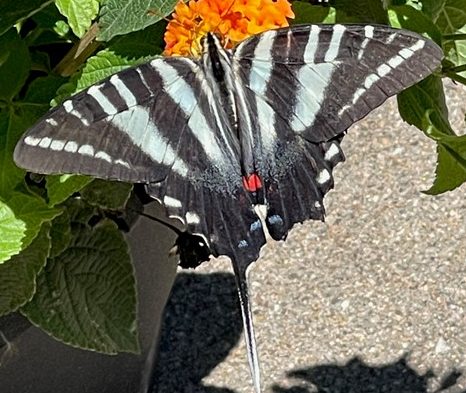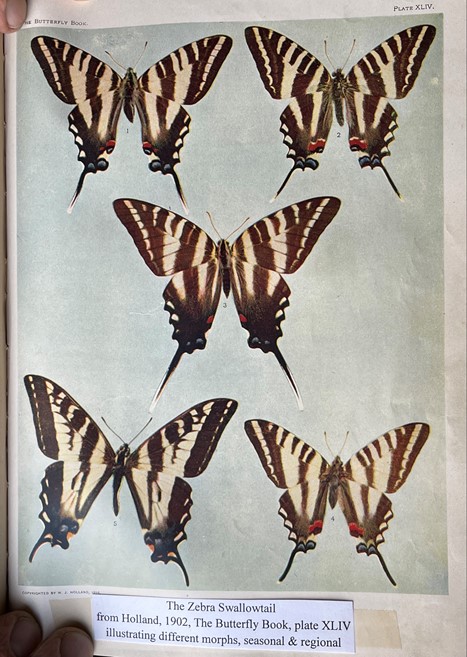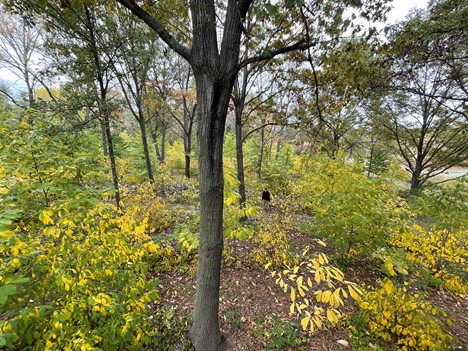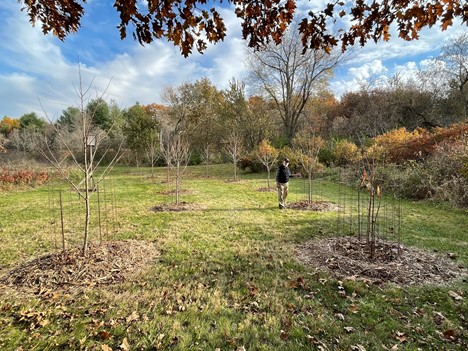Update on our Rare Butterfly Plantation, Part I: The Zebra Swallowtail
You perhaps already know that back in 2010, I began planting about four acres of uncommon native shrubs, vines and trees, which are obligate food sources for our most rare native butterflies.
About four or five years ago the planting was pretty much complete and I switched over to just lightweight maintenance and casual monitoring. A few highlights for 2021 include:
The caterpillars of the zebra swallowtail only eat pawpaw leaves. According to MacBride’s 1896 publication titled, “Forest Trees of Johnson County,” (Iowa Geological Survey Annual Report, vol. VII) pawpaw is native to Johnson County. And according to Patrick O’Malley, our county agricultural extension agent, zebra swallowtails have showed up at the extension pawpaw test plot on the south side of Columbus Junction. So I anticipate that the butterflies were probably here in Johnson County also with no one to document them.



This year a few zebra swallowtails showed up again around our place in midsummer, mostly hunting nectar in the nearby prairie planting flowers since pawpaws bloom in early spring and do not produce sweet nectar anyway (pawpaws were being pollinated by beetles and flies before honeybees were invented and they evidently saw no reason to change). Some of our neighbors also mentioned seeing this obligate butterfly species around their properties, probably attracted by the scent of the pawpaw leaves or fruit.
I did not notice any egg-laying or caterpillars of the species this year, but the plantation has turned into such a jungle, as planned, that a casual stroll doesn’t reveal much of what is happening there. Insecticide drift from cropland in the neighborhood may have terminated them.

Bur Oak Land Trust has taken an interest in restoring pawpaws and its butterfly to our local area. This year several dozen of our trees were old enough and positioned on damper parts of the landscape that in spite of the mini-drought of late summer they produced a crop of fruit.
I donated 10 or a dozen plastic grocery bags of fruit weighing perhaps 20 pounds apiece to the cause. A team of volunteers stripped out the seed and cleaned it, and grew weary of the lingering fruity-sweet odor (our car still smells a bit of pawpaw a month later.) The estimated 4,700 seeds are now in cool storage awaiting the spring planting/distribution program.

If you want to grow pawpaw, be aware that it is often a thicket former, sending out underground runners that can pop up as much as a dozen feet away from its parent. Regular mowing can contain them, or pick a location where a thicket is acceptable.
Stay tuned next week for other species of the plantation.


